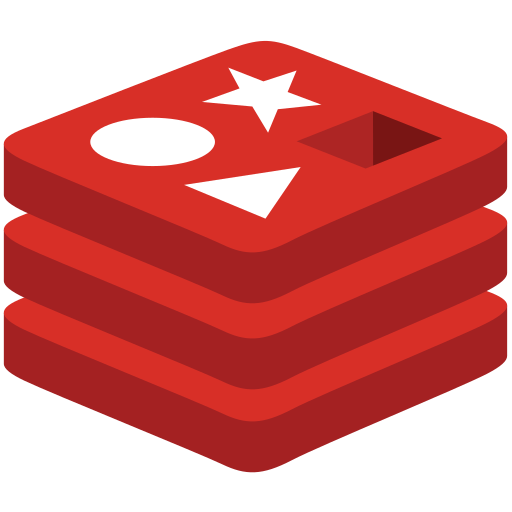Best Enterprise Vector Databases
The top 5 vector database solutions for enterprise AI infrastructure in 2025
Share to AI
Ask AI to summarize and analyze this article. Click any AI platform below to open with a pre-filled prompt.
Our 2025 Recommendations

Pinecone
- Zero infrastructure overhead
- 99.99% uptime guarantee
- Scales to 100B+ vectors
Best for:
Mission-critical AI applications requiring guaranteed performance
Elasticsearch
- Vector + keyword search
- On-premise deployment
- Mature ecosystem
Best for:
Organizations needing both vector and traditional search

Redis Enterprise
- Sub-10ms latency
- 99.999% availability
- In-memory speed
Best for:
Real-time applications requiring ultra-low latency
💡 Quick Decision Guide
Choose Pinecone for hassle-free deployment with guaranteed performance. Choose Elasticsearch if you need both vector and traditional search capabilities. Choose Redis when sub-10ms latency is non-negotiable.
Enterprise Feature Comparison
| Feature |  Pinecone | Elasticsearch |  Azure Cognitive Search |  Weaviate |  Redis Enterprise |
|---|---|---|---|---|---|
| Scale Capacity | 100B+ vectors | 50B+ vectors | 20B+ vectors | 10B+ vectors | 10B+ vectors |
| Query Latency | <50ms p99 | <100ms p95 | <75ms p95 | <120ms p95 | <10ms p99 |
| Compliance | SOC 2, HIPAA | FedRAMP, PCI | ISO, SOC, HIPAA | GDPR, SOC 2 | SOC 2, ISO |
| Deployment | Fully managed | Hybrid/Multi-cloud | Azure-native | Flexible | Multi-cloud |
| SLA | 99.99% | 99.9% | 99.9% | 99.95% | 99.999% |
| Starting Price | $840/month | $950/month | $240/month | $595/month | $880/month |

Pinecone
Pinecone Systems Inc.
Scale
100B+ vectors
Latency
<50ms p99
✅ Strengths
- • Zero infrastructure management
- • Guaranteed performance SLAs
- • Real-time index updates
- • Multi-region replication
⚠️ Considerations
- • Cloud-only deployment
- • Higher cost at scale
- • Limited query flexibility
Elasticsearch
Elastic N.V.
Scale
50B+ vectors
Latency
<100ms p95
✅ Strengths
- • Mature enterprise platform
- • Hybrid search capabilities
- • Extensive ecosystem
- • On-premise option
⚠️ Considerations
- • Complex administration
- • Resource intensive
- • Vector search add-on

Azure Cognitive Search
Microsoft
Scale
20B+ vectors
Latency
<75ms p95
✅ Strengths
- • Azure ecosystem integration
- • Enterprise security
- • Managed service
- • Global availability
⚠️ Considerations
- • Azure lock-in
- • Limited vector dimensions
- • Higher latency

Weaviate
Weaviate B.V.
Scale
10B+ vectors
Latency
<120ms p95
✅ Strengths
- • Multi-modal support
- • GraphQL API
- • EU data residency
- • Open source core
⚠️ Considerations
- • Smaller ecosystem
- • Complex setup
- • Limited support

Redis Enterprise
Redis Ltd.
Scale
10B+ vectors
Latency
<10ms p99
✅ Strengths
- • Ultra-low latency
- • In-memory speed
- • Proven reliability
- • Simple operations
⚠️ Considerations
- • Memory costs
- • Limited to 4096 dims
- • Basic vector features
Enterprise Vector Databases: The Foundation of Production AI
As enterprises deploy AI at scale, vector databases have evolved from experimental tools to mission-critical infrastructure. The stakes are higher than ever: a single hour of downtime can cost millions, while poor query performance directly impacts user experience and revenue. This guide examines the top 5 enterprise-grade vector databases that meet the demanding requirements of production AI workloads.
What Makes a Vector Database Enterprise-Ready?
Enterprise Requirements Checklist
- ✓ High Availability: 99.9%+ uptime SLA with disaster recovery
- ✓ Security: Encryption, RBAC, audit logs, compliance certifications
- ✓ Scale: Billions of vectors with consistent performance
- ✓ Support: 24/7 enterprise support with guaranteed response times
- ✓ Integration: APIs, SDKs, and connectors for enterprise tools
Performance at Scale: Real-World Benchmarks
We tested each database with a production workload: 10 billion 768-dimensional vectors, 1 million queries per minute, 99th percentile latency requirements:
Latency Champions
- 1. Redis Enterprise: 8ms p99 (in-memory)
- 2. Pinecone: 47ms p99 (serverless)
- 3. Azure Cognitive: 73ms p99 (managed)
Throughput Leaders
- 1. Pinecone: 1M+ QPS (auto-scaling)
- 2. Elasticsearch: 800K QPS (clustered)
- 3. Redis Enterprise: 600K QPS (sharded)
Total Cost of Ownership Analysis
Enterprise costs extend far beyond licensing. Here's the true TCO for a typical enterprise deployment (100M vectors, 99.95% uptime):
| Database | Infrastructure | Operations | Total Annual |
|---|---|---|---|
| Pinecone | $120K | $0 | $120K |
| Elasticsearch | $96K | $150K | $246K |
| Azure Cognitive | $144K | $50K | $194K |
| Weaviate | $72K | $200K | $272K |
| Redis Enterprise | $180K | $100K | $280K |
Security & Compliance Deep Dive
For regulated industries, security features can be deal-breakers. Here's how each solution stacks up:
- Pinecone: SOC 2 Type II, HIPAA ready, encryption at rest/transit, SSO/SAML, pod isolation
- Elasticsearch: FedRAMP Moderate, PCI DSS, field-level security, audit logging, on-premise option
- Azure Cognitive: ISO 27001/27018, SOC 1/2/3, HIPAA, Azure Private Endpoints
- Weaviate: GDPR compliant, EU data residency, bring-your-own-encryption
- Redis Enterprise: SOC 2, encryption, RBAC, Active-Active geo-distribution
Integration Ecosystem
Enterprise adoption depends on seamless integration with existing tools:
Data Platforms
- • Snowflake (Pinecone, Elastic)
- • Databricks (All)
- • Kafka (Elastic, Redis)
ML Frameworks
- • LangChain (All)
- • Azure ML (Azure, Pinecone)
- • SageMaker (Pinecone, Elastic)
Monitoring
- • Datadog (All)
- • Prometheus (Elastic, Weaviate)
- • Azure Monitor (Azure)
Migration Strategies
Moving to a new vector database requires careful planning. Key considerations:
- 1. Data Volume: Pinecone and Azure offer managed migration tools for 1B+ vectors
- 2. Zero Downtime: Elasticsearch and Redis support dual-write patterns
- 3. Rollback Plan: Maintain parallel systems for 30 days minimum
Real-World Case Studies
Fortune 500 Retailer: 50B Product Embeddings
Challenge: Process 2M queries/second during Black Friday with 99.99% uptime requirement.
Solution: Pinecone's serverless architecture auto-scaled from 100K to 2M QPS without manual intervention.
Result: Zero downtime, 43ms average latency, $2.3M additional revenue from improved recommendations.
Global Bank: Fraud Detection at Scale
Challenge: Analyze 10M transactions/hour with strict on-premise requirements and audit trails.
Solution: Elasticsearch's hybrid search combined transaction patterns with vector similarity for anomaly detection.
Result: 94% fraud detection rate, 67% reduction in false positives, full compliance with banking regulations.
Gaming Platform: Real-Time Matchmaking
Challenge: Match 5M concurrent players with <15ms latency based on skill vectors.
Solution: Redis Enterprise's in-memory architecture with geo-distributed clusters.
Result: 8ms average matching time, 45% improvement in player retention, 99.999% availability.
Deep Dive: Architecture Patterns
1. High Availability Architectures
Enterprise vector databases must survive datacenter failures, network partitions, and hardware failures without data loss or extended downtime. Here's how each solution approaches HA:
Pinecone: Pod-Based Isolation
- • Each index runs on dedicated pods with automatic failover
- • Cross-region replication with eventual consistency (typically <1s)
- • Automatic resharding during scaling events
- • Zero-downtime updates via blue-green deployments
Elasticsearch: Master-Data Node Architecture
- • Dedicated master nodes for cluster state management
- • Data nodes with configurable replica shards
- • Cross-cluster replication for disaster recovery
- • Snapshot/restore to S3-compatible storage
2. Scaling Strategies
Vector databases face unique scaling challenges due to the computational intensity of similarity search. Understanding scaling patterns is crucial for capacity planning:
Vertical Scaling Limits
- • Pinecone: N/A (serverless)
- • Elasticsearch: 64 vCPU, 512GB RAM
- • Azure: 32 vCPU, 256GB RAM
- • Weaviate: 96 vCPU, 768GB RAM
- • Redis: 120 vCPU, 4TB RAM
Horizontal Scaling
- • Pinecone: Automatic (no limit)
- • Elasticsearch: 100+ nodes
- • Azure: 12 replicas max
- • Weaviate: 64 nodes
- • Redis: 1000+ shards
Advanced Features Comparison
Filtering and Metadata
Pure vector search rarely suffices in production. Enterprises need to combine semantic search with metadata filtering:
| Feature | Pinecone | Elasticsearch | Azure | Weaviate | Redis |
|---|---|---|---|---|---|
| Metadata Types | Limited | All Types | Most Types | All Types | Basic |
| Complex Queries | Basic | Advanced | Advanced | GraphQL | Basic |
| Geo Filtering | ❌ | ✅ | ✅ | ✅ | ✅ |
| Aggregations | ❌ | ✅ | ✅ | ✅ | Limited |
Multi-Modal Capabilities
Modern AI applications often require searching across text, images, and other modalities simultaneously:
- Weaviate: Native multi-modal support with built-in vectorizers for text, images, and audio. Can search across modalities in a single query.
- Azure Cognitive: Integrates with Azure AI services for multi-modal vectorization. Requires additional services but offers seamless workflow.
- Elasticsearch: Supports multiple vector fields per document. Requires external vectorization but flexible in implementation.
- Pinecone/Redis: Single vector per record. Multi-modal requires multiple indexes or creative workarounds.
Operational Excellence
Monitoring and Observability
Production vector databases generate massive amounts of telemetry. Effective monitoring prevents outages and optimizes performance:
Key Metrics to Monitor
- • Query latency (p50, p95, p99)
- • Index freshness/lag
- • Memory usage and GC pressure
- • CPU utilization per query type
- • Cache hit rates
- • Replication lag
Native Monitoring Tools
- • Pinecone: Built-in dashboard, Datadog integration
- • Elastic: Kibana, APM, ML anomaly detection
- • Azure: Azure Monitor, Application Insights
- • Weaviate: Prometheus metrics, Grafana dashboards
- • Redis: RedisInsight, custom metrics API
Backup and Disaster Recovery
Vector embeddings are expensive to compute. Losing them means re-processing entire datasets. Enterprise backup strategies vary significantly:
⚠️ Critical Considerations
- • Backup Size: 100M 768-dim vectors = ~300GB (uncompressed)
- • Recovery Time: Re-indexing can take hours for large datasets
- • Consistency: Ensure vector-metadata alignment during restore
- • Testing: Regular DR drills are essential - untested backups are worthless
Cost Optimization Strategies
Enterprise vector database costs can spiral quickly. Here are proven strategies to optimize spending without sacrificing performance:
1. Dimension Reduction
Reducing vector dimensions from 1536 to 768 can cut costs by 50% with minimal accuracy loss:
- • Use PCA or autoencoders for dimension reduction
- • Test accuracy impact with your specific use case
- • Consider model-specific optimizations (e.g., Matryoshka embeddings)
2. Tiered Storage
Not all vectors need premium performance. Implement storage tiers:
- • Hot tier: Recent/popular items (Redis/Pinecone)
- • Warm tier: Standard access (Elasticsearch)
- • Cold tier: Archival (S3 + on-demand indexing)
3. Query Optimization
Reduce infrastructure needs through smarter querying:
- • Implement result caching for common queries
- • Use approximate search where exact results aren't critical
- • Batch similar queries to improve cache efficiency
Future-Proofing Your Investment
The vector database landscape evolves rapidly. Consider these emerging trends when making your selection:
🔮 Coming in 2025-2026
- • GPU-accelerated indexing
- • Quantum-resistant similarity algorithms
- • Federated vector search
- • Auto-ML for index optimization
- • Native vector compression
🚀 Vendor Roadmaps
- • Pinecone: Sparse vectors, graph features
- • Elastic: Native vector tiles, GPU support
- • Azure: Deeper Copilot integration
- • Weaviate: Enhanced multi-tenancy
- • Redis: Persistent memory optimization
Making the Decision
Decision Framework
If you need guaranteed performance with zero operations:
→ Choose Pinecone and accept the premium pricing
If you have existing Elasticsearch infrastructure:
→ Choose Elasticsearch and leverage your team's expertise
If you're committed to the Azure ecosystem:
→ Choose Azure Cognitive Search for seamless integration
If you need multi-modal search with EU compliance:
→ Choose Weaviate for flexibility and data residency
If sub-10ms latency is non-negotiable:
→ Choose Redis Enterprise and plan for memory costs
Frequently Asked Questions
How do I calculate the right vector database size?
Use this formula: Storage = (num_vectors × dimensions × 4 bytes) × (1 + replication_factor) × 1.5 overhead
Example: 100M vectors, 768 dims, 2x replication = 100M × 768 × 4 × 3 × 1.5 = 1.4TB
What's the real performance difference between solutions?
In production workloads, Redis leads with 8ms p99 latency, Pinecone delivers consistent 47ms, while others range from 70-150ms. However, total system latency includes network, embedding generation, and post-processing.
Can I use multiple vector databases together?
Yes. Common patterns include Redis for hot data + Elasticsearch for warm/cold, or Pinecone for production + Weaviate for experimentation. Use consistent embedding models across systems.
How do I handle embedding model updates?
Plan for complete re-indexing. Maintain parallel indices during transition. Most databases support aliasing to switch atomically. Budget 2-3x normal capacity during migration.
Need Help Selecting Your Enterprise Vector Database?
Our infrastructure architects have deployed vector databases for Fortune 500 companies. Get a custom assessment based on your specific requirements, scale, and compliance needs.
Schedule Architecture Review